Noticias
Ancient Wisdom, Modern Power - The Timeless Benefits of Medicinal Mushrooms
In a world that moves faster than ever, we’re all looking for ways to stay energised, focused, and balanced—without relying on endless cups of coffee. Interestingly, the answer might not lie in the latest wellness trend, but in something ancient and deeply rooted in human history - medicinal mushrooms.
Used for thousands of years in Eastern medicine, varieties like Lion’s Mane, Cordyceps, Reishi, and Chaga have long been celebrated for their incredible mind and body benefits. Today, they’re being rediscovered by a new generation looking for natural ways to enhance productivity and well-being. Gold Dust by Variety Mode brings this ancient wisdom into the modern world, offering a delicious adaptogenic mushrooms coffee that helps you perform at your best—calm, clear, and full of energy.
The Ancient Roots of Modern Energy
Let’s rewind a few thousand years. Ancient Chinese healers used Reishi—often called the “mushroom of immortality”—as a tonic to support longevity, reduce stress, and strengthen the immune system. Meanwhile, in Japan and Korea, Lion’s Mane was prized by monks for its brain-boosting qualities, helping to enhance concentration during long meditation sessions. Siberian tribes gathered Chaga for its powerful antioxidant properties, while the Himalayan regions valued Cordyceps for its ability to increase stamina and endurance.
These fungi weren’t just food—they were sacred allies. Each had a unique purpose, and together, they formed a cornerstone of natural healing traditions across the world.
Why Medicinal Mushrooms Still Matter Today
Fast forward to now, and science is catching up with what ancient wisdom already knew. Medicinal mushrooms are packed with bioactive compounds that support mental clarity, immune function, and sustained energy. Unlike caffeine—which gives you a temporary jolt followed by an inevitable crash—mushroom energy supplements like Gold Dust provide a smooth, steady lift that keeps you focused for hours.
Lion’s Mane is known to stimulate nerve growth factor, which supports brain health and memory. Reishi helps calm the nervous system, reducing anxiety and promoting restful sleep. Chaga is rich in antioxidants that fight oxidative stress, and Cordyceps naturally boosts energy production at the cellular level—ideal for anyone who wants to perform without burnout.
A Natural Way to Stay in Flow
Gold Dust isn’t just another coffee alternative. It’s a smart blend that bridges the gap between ancient tradition and modern needs. You get the gentle wake-up of a morning coffee, but without the crash, jitters, or afternoon slump. The result? A clear, focused mind that can handle whatever the day throws at you.
Think of it as your daily ritual for balance and performance. You’ll feel calm yet alert, energised yet grounded—what many describe as being in a “flow state.” And when night falls, you’ll rest easy knowing your body’s been supported, not overstimulated.
Why Choose Gold Dust
Gold Dust by Variety Mode has earned its reputation as the UK’s #1 adaptogenic mushrooms coffee because it delivers results you can feel. You’ll notice an increase in productivity, sharper focus, and an uplifted mood—all without the side effects of regular caffeine. Whether you’re tackling a busy workday, studying, or just want to feel your best naturally, Gold Dust helps you stay in control of your energy and your mindset.
Ready to Experience Ancient Power in Every Sip?
It’s time to bring balance back into your routine. Swap your usual brew for Gold Dust and feel the difference from the very first cup. Supercharge your productivity, care for your mental health, and embrace the timeless power of nature’s most extraordinary fungi.
Discover the full range at VarietyMode.com and unlock your calm, focused, and energised self—naturally.
Creative Ways to Use Mushroom Powders in Everyday Recipes
Mushroom powders have been slowly winning their way into kitchens worldwide. From sleeping in the lower shelves of the health food aisle, they are now garnering respect for everyday use – a rightful status; there is much from which to praise them. These powders can provide some colour, flavour, and nutrients, and to a very subtle extent, you don't have to consciously think of messing around with your food while using them. It's really that simple: if you want to go awry, do! A couple of teaspoons here, a few more over there, and back to excitement with the old recipes!
Start the Day with a Boost
The natural starting point would be smoothies. You normally toss in fruit, yoghurt, oats, or nut butters, so half a teaspoon of mushroom powder feels like the natural thing to do. It blends in so well that you would never guess it was there if accompanied, say, by cacao or berries. Another choice that comes together quickly is overnight oats. For these, just stir a little powder into the oats before putting them in the fridge; by morning, your creamy base with an earthy twist is an energising treat for hours.
Snack Smarter
The afternoon slump always hits, and the temptation to try eating some biscuits or crisps arises. Try no bake protein balls instead. They can be prepared in batches and stored inside the fridge for the entire week. Dates, oats, and nut butter, with a bit of mushroom powder, combine to become treats that taste great and are very satisfying when eaten in small bites. To spice them up, roll the balls in coconut flakes or cocoa powder.
Give Dinner a Subtle Upgrade
Mushroom powders really show their stuff when it comes to savouries. A spoonful goes a long way to deepening flavour when stirred into soups, stews, and risottos, while allowing the other flavours to stand out. If you enjoy pasta, throw some into your sauce for that lovely slightly earthy undertone which goes well with tomato or cream sauces. By all means, if you are making a stir fry, throw a sprinkle over it and watch as your quick midweek dinner develops into something richly layered and comforting to eat!
Baking with a Twist
It dawns upon you if you ever assumed mushroom powders might never find usage in baking. A little bit of these powders can be used in chocolate brownies, banana bread, or even in homemade energy bars, all of which will mask the effect on taste. Really, they do contribute to an almost intoxicating richness, which slightly fills little corners of the flavour. In a nutshell, it's like an easy trick that ensures that every indulgent treat possesses a thin whiff of healthiness.
Making Mushrooms Part of Your Lifestyle
What transforms mushroom powders into a completely innocent and appealing thing is how easily they can be interjected into everyday life. They do not make heavy demands of recipes or skills any tiny adjustment to whatever you are creating would work. Brands such as Variety Mode have made cooking much more enjoyable in recent years by offering various kinds of blends that are well curated and hence, fun to experiment with instead of intimidating.If you are feeling adventurous about trying, just start small:Stir some into your morning coffee or sprinkle some mushroom powders into soup or a favourite bake recipe. Love grows fast with mushroom powder, becoming the simplest and most trusted part of everyday cooking.
Discover more about mushroom powders and start experimenting with your own recipes today.
How Functional Mushrooms Support Your Immune System Year Round
Now when one thinks about mushrooms, the first idea that comes up would be as a pizza topping or perhaps as an important ingredient to make classic mushroom soup on a chilly day. With that said, there are fungi that silently operate in the background in support of your health. Functional mushrooms have been adored for centuries in traditional medicine fields, though recently there has been a resurgence of fascination for them in the sphere of modern wellness. The interesting thing is that they adjust your immune system, keeping it in balance regardless of what the season throws at you.
What Makes a Mushroom “Functional”?
Not every mushroom you find in the supermarket bears the same kind of benefits. There exist certain kinds of functional mushrooms whose properties go beyond mere nutritional value. Functional mushrooms contain bioactive compounds like beta glucans, antioxidants, and polysaccharides which interact with your body's natural defences. These compounds enhance your innate immune response to function sufficiently when required, yet remain calm when there is no need.
Reishi, The Calm Protector
In traditional Chinese medicine, Reishi is often called the "mushroom of immortality", for it is said to enhance immune response while relaxation and stress reduction set the tone. By way of explanation, when we are stressed, our bodies are more prone to fall sick. Reishi acts on the spirit of the immune system: from time to time, it whispers, "Give them a stronger immune response," and other times, it says, "Take it easy for now."
Shiitake, the Everyday Booster
You may be familiar with shiitake mushrooms in the kitchen; they possess an earthy and rich taste that fits well in many dishes, but they also work to support your immune system. They are full of lentinan, a substance that has been found to promote the action of immune cells. Especially since climate changes or an erratic schedule take over your routine, the regular intake of shiitake mushrooms can give you a little more mental sturdiness.
Turkey Tail, The Gut Guardian
This is how the immune system connects itself to gut health, with Turkey Tail mushrooms being integral here. They contain prebiotics that nurture gut bacteria considered beneficial, which, in turn, builds a massive immunity foundation. A healthy gut equals a resilient body that can age without barriers. Seasonal bugs might have hard times infecting while the body stands tall along with high stress spells.
Cordyceps, the Energy Enhancer
Cordyceps may help improve stamina and energy, but their immunological effects are even more remarkable. Your bodies probably produce natural killer cells when offered protection against viruses and bacteria. Hence, such agents would be ideal during the winter or busy periods when our body's defence mechanisms, otherwise alerted, require a little help.
Bringing It All Together
Functional mushrooms are amazingly beautiful in that they fortify the immune system in a balanced and adaptive manner. They do not work to put the immune system into overdrive but will support its adjustment to changes taking place in your body and surrounding factors. These can be ecological changes, a slow start to flu season, or those quite stressful few days at work. The mushrooms can help you to feel more stable and resilient.
There are many ways to integrate these into your daily life, and initial entry options would be teas, powders, or even a blend of supplements with different varieties for a broader range of effects. Do keep in mind that only with a lifestyle consisting of ample nourishment, much movement, and enough sleep will these go far in helping you.
To explore high quality options and learn more about how functional mushrooms can fit into your life, visit Variety Mode.
Adapting to Stress: How Regular Use of Variety Mode Supports Your Body’s Response
That particular moment when the universe seems to demand that the world fall apart all at once is something umbrellas for each and every one of us. Our inbox gets filled to the brim, and with hundreds of things to do in lists, our minds simply have none left inside. Some of those days are just off. Some might say a jolt of caffeine is needed, but a quieter, more balanced solution is gaining attention, adaptogens. Adaptogenic mushrooms coffee, in particular. If you still have not made the acquaintance of Variety Mode, allow me to escort you on a little journey.
What Are Adaptogens, and Why Should You Care?
Adaptogens are substances that act on the body's response to stress, be it physical or mental. One might think of them as nature's way of lending a helping hand when everyday pressures become too much. Historically the brave, unseen workers of traditional herbal medicine, adaptogens have been calming frayed nerves, energising the weary, and restoring balance for centuries.
Instead of energetically running businesses on a strong shot of espresso, adaptogens maintain equilibrium within the body's systems. They regulate cortisol levels and aid adrenal functions, nurturing a stronger and more resilient posture against life stressors of the day-to-day kind.
Enter Adaptogenic Mushrooms Coffee
Now, if you’re picturing a mug of coffee that tastes like a forest floor, stay with me. The latest evolution in wellness blends the beloved ritual of coffee with the powerful properties of adaptogenic mushrooms like reishi, lion’s mane and cordyceps. These aren’t your average cup fillers. They bring clarity, focus and calm, all without the crash.
Reishi is renowned for its calming qualities. It’s a gentle wind-down in a cup. Lion’s mane sharpens your focus, making it ideal for those long days at the laptop. Cordyceps supports stamina and energy, helping you keep going without relying on sugar or caffeine highs. Together, they offer a brew that supports your body and brain in equal measure.
How Variety Mode Brings It All Together
What makes Variety Mode stand out is how thoughtfully everything is blended. This isn’t just a wellness fad dressed up in buzzwords. It’s a genuinely enjoyable part of the day that happens to support your nervous system, mental clarity and physical resilience.
Regular use of their adaptogenic mushrooms Coffee can help reduce the feeling of overwhelm. You may find yourself reacting to stress with a little more ease. Your sleep might improve. Your afternoons might not need that second caffeine hit. It’s not a miracle, but it is a shift — subtle at first, then unmistakably present.
And because Variety Mode keeps things natural, there’s no synthetic nonsense. Just carefully chosen ingredients that work with your body, not against it.
Making Stress Management a Daily Ritual
We all have our routines. Morning brews, afternoon breaks, late-night wind-downs. What if these weren’t just habits but moments of support? That’s what adaptogenic mushroom coffee offers — not a fix, but a foundation.
So, whether you’re deep in a deadline, juggling life’s chaos, or just in need of a new way to care for your mind and body, consider making this blend a daily companion.
Take a pause. Breathe. Let the adaptogens do their thing. Then carry on — calmly, clearly and with a bit more ease.
Discover the full range and start your journey with Variety Mode today.
Mushrooms & the Microbiome - Can They Help Support Gut Health
Let’s be honest, when we think of mushrooms, we’re more likely to picture a pizza topping or forest fungi than a gut health game-changer. But a growing body of research is shining the spotlight on medicinal mushrooms like reishi and turkey tail, revealing their surprising potential to support your microbiome and improve digestion.
At Variety mode, in our Gold Dust, we’re passionate about natural ways to supercharge energy and boost wellbeing, and mushrooms are right at the heart of our adaptogenic mushroom coffee blends. But beyond their brain-boosting, mood-lifting properties, some of these clever fungi are now being studied for their gut-supportive benefits too.
What’s the Gut Got to Do With It?
Your gut is home to trillions of microbes that affect everything from digestion and immunity to mental health. This microbiome thrives when it’s in balance, but modern lifestyles, processed food, and stress can throw things off. Enter mushroom energy supplements. Unlike regular caffeine hits that can spike and crash your system, adaptogenic mushrooms coffee offers a smoother, more sustained lift—while also potentially giving your gut flora some much-needed TLC.
Meet Reishi - The Calm Yet Powerful One
Known as the “mushroom of immortality” in traditional Chinese medicine, reishi has long been used for its calming, immune-supporting qualities. But now researchers are taking a closer look at how reishi might influence gut health too.
Early studies suggest that reishi contains prebiotic compounds—nutrients that feed the good bacteria in your gut. By nourishing the beneficial microbes, reishi may help rebalance the gut and reduce inflammation, which is often linked to digestive discomfort and chronic illness. Plus, reishi is an adaptogen, meaning it helps your body adapt to stress. Since chronic stress can wreak havoc on digestion, this calming effect could indirectly support a healthier gut environment.
Turkey Tail - Your Gut’s New Best Friend
If you’re not familiar with turkey tail, don’t let the name throw you. This colourful mushroom has been the subject of some promising scientific research, particularly around its high concentration of polysaccharides—especially beta-glucans—which play a role in stimulating immune cells and improving microbial diversity.
Beta-glucans can act as natural prebiotics, feeding friendly gut bacteria and helping maintain a diverse and resilient microbiome. A strong gut flora not only aids digestion but also supports overall energy and mental clarity. That’s exactly why we include turkey tail in our Gold Dust blends. It’s all about fuelling your focus while gently supporting your body from within.
Why Gold Dust Is the UK’s Favourite Adaptogenic Mushrooms Coffee
We’re not just about good vibes and earthy flavour. Gold Dust is crafted to help you feel calm, focused, and energised without the typical crash of standard coffee. Our unique mushroom energy supplements combine powerful adaptogens like reishi and turkey tail to boost mental clarity, improve mood, and support gut health—all in one delicious morning ritual.
Say goodbye to jittery caffeine highs and afternoon slumps. With Gold Dust, you’ll enjoy sustained energy, sharper focus, and a more balanced system overall. And because your gut is the foundation of your wellbeing, we’re proud to include ingredients that support digestion and immunity as part of your daily brew.
Ready to Nourish Your Gut and Boost Your Brain?
Whether you're diving into your busiest workday or just trying to feel more like you, a gut-loving cup of Gold Dust is the perfect place to start. Discover the power of reishi, turkey tail, and other adaptogens in our signature mushroom coffee blends.
Shop now at VarietyMode.com and feel the Gold Dust difference for yourself. Your body (and your gut) will thank you.
7 Reasons Why the Best Mushroom Supplement for Energy Should Be in Your Daily Routine
Tired of feeling tired? You are not the only one. Many people feel low on energy during the day. The usual fix is coffee or sugar. But those can lead to crashes and more fatigue later.
There is a better way. The best mushroom supplement for energy can give you clean, lasting power: no jitters or sugar highs, just real energy from natural ingredients.
Let’s explore why mushroom energy supplements deserve a place in your daily routine.
1. It Boosts Natural Energy Levels
These supplements work with your body. They support natural processes, which means you feel energised all day. There are no spikes or sudden crashes, just smooth energy that helps you stay active.
2. Sharpens Focus and Clears the Mind
Some mushrooms, like Lion’s Mane, are known for brain support. They help you stay focused. You think more clearly. This is great for work, study, or even a busy home life.
When your mind feels fresh, your body follows.
3. Beats Tiredness From the Inside
Cordyceps mushrooms help your body use oxygen better. This means your muscles and cells get more of what they need. You feel stronger and less tired. You can move more without getting worn out.
That is why cordyceps are found in the best mushroom supplement for energy.
4. Helps Lower Stress Naturally
Modern life is stressful. Over time, stress drains your energy. Adaptogenic mushrooms like Reishi and Chaga help with this. They support your adrenal system and bring it back into balance.
Less stress means more energy. It also means better sleep and a calmer mind.
5. A Better Swap for Coffee
Coffee gives quick energy. But then you crash. You may also feel anxious or jittery. Mushroom supplements do not do this. They provide steady energy. You feel alert without feeling weird.
They are a smart swap for your afternoon coffee.
6. Boosts Gut and Immune Health
Your gut and immune system need care, too. These mushrooms are full of good stuff like antioxidants and fibre. They help your body fight off illness and stay strong.
When your gut is happy, your energy improves, too.
7. Easy to Add to Your Day
Taking the best mushroom supplement for energy is simple. You can mix it into drinks, smoothies, or even sprinkle it over food. Some versions taste like cocoa or vanilla.
No pills to swallow. No effort needed. Just scoop, stir, and enjoy.
Try It Today
If you are always tired, you need more than a quick fix. Mushrooms offer real support for your body and mind. You will feel the change in your focus, mood, and energy levels.
Want to give it a try? Visit VarietyMode to find your perfect blend. Their range includes top picks like cordyceps, lion’s mane, and reishi. Choose the best mushroom supplement for energy and feel the natural boost every day.
The Coffee Crash Is Real: Here’s What to Drink Instead
If first thing in the morning means a strong cup of coffee, you’re not alone. But for many, that burst of energy comes hand in hand with jitters, afternoon slumps and nights spent staring at the ceiling. Here’s why your daily brew might be doing more harm than good, and how adaptogenic mushrooms from Variety Mode can give you calm, focused energy without the crash.
Why Coffee Can Let You Down
-
Energy Crashes
Caffeine gives you a rush by blocking adenosine, the chemical that tells your brain it’s time to rest. When the effect wears off, adenosine floods back, leaving you dragging by mid‑afternoon. -
Jitters and Anxiety
Too much caffeine can overstimulate your nervous system. That racing heart or unsettled stomach is your body’s way of asking you to slow down. -
Poor Sleep
Even a latte after lunch can interfere with deep sleep later that night. The result is a cycle of fatigue that drives you back to the coffee pot.
Meet Your New Morning Ritual: Adaptogenic Mushrooms
Adaptogenic mushrooms have been used for centuries in traditional medicine to help the body adapt to stress. Unlike caffeine they support sustained energy, mental clarity and a sense of calm, all in one cup.
Lion’s Mane
Known for its nerve‑growth factors lion’s mane supports cognitive function and focus. Users report sharper thinking and a more creative flow without the mental fog.
Cordyceps
These fungi help increase oxygen uptake and improve stamina. Whether you’re powering through a busy office day or an early‑morning workout cordyceps can boost endurance naturally.
Reishi
Often called the mushroom of immortality reishi is prized for its calming, immune‑supporting benefits. A daily dose can help you manage stress and strengthen resilience over time.
Why Variety Mode Blends Are the Easiest Upgrade
-
Ready to Brew
Each sachet mixes seamlessly into hot water, tea or your favourite oat milk latte. No grinding or guessing on dosage. -
Delicious Flavours
From smooth cacao to warming turmeric ginger every blend is crafted to taste as good as it feels. -
Lab‑Tested Quality
Variety Mode sources mushrooms from trusted growers and tests every batch for purity and potency.
Ditch the afternoon slump and sleepless nights. With adaptogenic mushroom blends from Variety Mode you can enjoy clear, steady energy, better focus and a calmer mind. Ready to start your day the smarter way?
Discover your perfect morning cup at VarietyMode.com
ADHD, Anxiety & Mood Swings: How Mushrooms Can Help Naturally
Life can be hard, and many people struggle. This is true for those with ADHD and anxiety. Mood swings make it tough, too. Stress and stomach issues can hurt focus. It can be hard to feel good.
Instead of pills, there are natural options. Adaptogenic mushrooms are one choice. Reishi and Chaga are good examples. They may help reduce stress. They can also boost gut health and help clear your mind.
The Link Between Gut Health, Stress, and Cognitive Function
Your gut health affects how you feel. This is called the “gut-brain axis.” Your gut and brain talk to each other all the time.
If your gut is not healthy, it can cause problems like inflammation. This can upset important chemicals like serotonin and dopamine. These help with your mood and focus. If they are not balanced, you might feel anxious or have mood swings. It can also be hard to pay attention.
Stress makes things harder. It raises cortisol, which can harm the good bacteria in your gut. When this happens, you may not think or feel well. You might feel tired, stressed, or unfocused.
The good news is that nature can help. Adaptogenic mushrooms, like Reishi and Chaga, can lower stress, help your gut, and boost your mental clarity.
How Adaptogens Like Reishi and Chaga Support Mood Balance
Reishi: The Stress Soother
Reishi is called the "mushroom of immortality." It helps lower cortisol. This means less stress and more relaxation. This is important for people with ADHD or anxiety. Too much stress makes it hard to focus and control feelings.
Reishi also helps with sleep. Bad sleep can cause mood swings and confusion. When you sleep better, Reishi helps keep your feelings steady and makes you healthier overall.
Chaga: The Brain Booster
Chaga has many antioxidants, which can help reduce swelling and improve brain function. A healthy brain enables greater focus, less irritation, and a better mood.
Chaga also helps your immune system. When your body feels good, your mind feels good, too. Less stress means fewer mood swings and clearer thinking.
Easy Ways to Add These Mushrooms to Your Daily Routine
Start Your Morning Right
Try switching your regular coffee for a special mix like Gold Dust Cocoa. It gives you energy without the caffeine crash. Plus, it tastes great!
If you like tea, add Reishi powder to your herbal mix. It helps calm your mind before starting the day.
Midday Boost
Add a teaspoon of chaga powder to your smoothie or juice if you feel stressed or fuzzy in the afternoon. It mixes in nicely, helps balance stress hormones, and improves focus.
Grab Variety Mode’s Cherry Gummies for a quick snack. They taste great and help keep your mood steady all day.
Evening Wind Down
Before bed, a warm cup of Gold Dust Vanilla helps you unwind and prepare for deep sleep. It’s caffeine-free, so that it won’t disrupt your sleep cycle.
For even more relaxation, try mindfulness activities like journaling or meditation. These activities help clear your mind and ease stress, preparing you for the next day.

Ready to Take Control of Your Mood Naturally?
Your mental health is in your hands. With the right adaptogens, you can help your gut feel better, lower stress, and boost your focus.
Try Variety Mode’s adaptogenic blends today and start feeling the difference!
The Gut-Brain Connection: How Mushrooms Support Digestion; Mental Health

Unlock the secret synergy of your gut and brain with nature's marvel: mushrooms. While the gut-brain axis has been a buzzword for a while, there’s more to this connection than you might think, especially when it comes to the benefits of mushrooms. Let’s dive into some fresh insights on how these fascinating fungi support both digestion and mental health, and why incorporating adaptogenic mushrooms coffee into your routine might be the game-changer you didn’t know you needed.
Decoding the Gut-Brain Axis
Our gut is often called the “second brain” for a reason. The gastrointestinal tract houses millions of neurons and a vast community of microbes that communicate directly with the brain via the vagus nerve. This bidirectional dialogue means that what happens in your gut can affect your mood, stress levels, and overall mental clarity. Emerging research hints that maintaining a healthy gut microbiota can help regulate mood and even sharpen cognitive functions.
Mushrooms: Nature’s Multifunctional Powerhouses
Mushrooms are more than just a culinary delight, they’re packed with bioactive compounds that can help regulate the immune system and promote a balanced gut environment. Here are a few unique ways mushrooms make a difference:
-
Beta-Glucans & Immune Modulation:
These complex sugars found in mushrooms help stimulate the immune system, which in turn can support gut integrity and reduce inflammation. -
Anti-Inflammatory Properties:
Chronic gut inflammation is a known contributor to mood disorders and digestive issues. Mushrooms like reishi and chaga have natural anti-inflammatory compounds that soothe the digestive tract. -
Gut Microbiota Balance:
Certain mushrooms act as prebiotics, fuel for the beneficial bacteria in your gut. A balanced microbiota is crucial for optimal digestion and the production of neurotransmitters that affect mood.
Adaptogenic Mushrooms: Bridging Digestion and Mental Health
Adaptogenic mushrooms are a unique group known for their ability to help the body resist stress. This stress resilience plays a vital role in both gut and brain health. Consider some of these star players:
-
Lion’s Mane:
Not only does it support nerve growth factor production, potentially boosting cognitive function, but it may also influence gut motility and nutrient absorption. -
Reishi:
Revered for its calming properties, reishi can reduce cortisol levels, which is beneficial for both your digestive system and overall mental wellbeing. -
Cordyceps & Chaga:
These mushrooms help regulate energy levels and may assist in balancing inflammatory responses throughout the body.
Adaptogenic Mushrooms Coffee: A Modern Ritual for Holistic Health
Enter adaptogenic mushrooms coffee—a revolutionary way to kickstart your day with balanced energy. By infusing your morning brew with a blend of adaptogenic mushrooms, you not only enjoy the rich flavor of coffee but also harness the benefits of these potent fungi. Here’s why this beverage is turning heads:
-
Balanced Energy Boost:
The combination of caffeine and adaptogens provides a smoother, more sustained energy release without the typical jitters or crashes. -
Stress Support:
Adaptogenic compounds help modulate your body’s stress response, giving you a calmer start to your day and a healthier gut-brain balance. -
Digestive Harmony:
With anti-inflammatory and prebiotic properties, adaptogenic mushrooms in your coffee might aid digestion and support a thriving gut microbiota.
Integrating Mushrooms into Your Daily Life
Adopting a holistic approach to health means considering both your gut and your brain. Here are a few practical tips:
-
Morning Ritual:
Swap your regular coffee for adaptogenic mushrooms coffee. It’s an easy way to incorporate these benefits into your daily routine. -
Balanced Diet:
Include a variety of mushroom-based dishes in your diet. Whether it’s a hearty soup or a vibrant salad, mushrooms add flavor and functionality. -
Mindful Living:
Remember that small, consistent changes add up. Prioritizing gut health through diet and stress management can lead to improved mental clarity over time.
Final Thoughts
The gut-brain connection is a complex and dynamic relationship that shapes our overall wellbeing. Mushrooms, with their potent blend of bioactive compounds, offer a natural and innovative way to support both digestion and mental health. Embracing adaptogenic mushrooms coffee is just one delicious method to weave these benefits into your everyday life.
At Variety Mode, we’re passionate about bringing you unique, thoughtfully crafted products that not only taste amazing but also nurture your mind and body. Explore the world of adaptogenic mushrooms coffee and experience firsthand how nature’s wisdom can transform your day.
Most Common Types of Mushrooms
Mushrooms exist in distinct forms in terms of shape, size, and taste, which make them a common ingredient in most culinary delights around the globe. Here are some most common types of mushrooms:
Button Mushroom (Agaricus bisporus): This is the most popular variety of mushroom stocked at supermarkets. These potatoes are of the smooth/creamy type with tender but firm flesh that can be used in cooking of variety dishes.
Portobello Mushroom (Agaricus bisporus): Portobello mushrooms are fully grown button mushrooms that have a rich, savory taste with a large, broad cap. They are quite popular and used as meat substitute in vegetarian dishes.
Cremini Mushroom (Agaricus bisporus): The type of cremini mushroom often referred to as “baby bellas” has a richer, more intense, and somewhat deeper and earthy taste than the button mushroom, but it is still button-mushroom-like.
Shiitake Mushroom (Lentinula edodes): The shiitake bears an umami flavor and a meaty consistency. They have been found quite beneficial in the making of Asian dishes.
Oyster Mushroom (Pleurotus ostreatus): The taste of oyster mushrooms is extremely delicate, rather nut-like; they are also fairly succulent. Used for stir-fried, soups, among others.
Chanterelle Mushroom (Cantharellus cibarius): Their taste is fruity and peppery, with almost an aromatic note of sweetness. They may be fried or added to cream-based gravies.
Morel Mushroom (Morchella spp.): These mushrooms are characterized by their honeycomb-like look and unique nutty, earthy taste. These are treasured by gourmet cooks.
Porcini Mushroom (Boletus edulis): Porcini mushrooms have an intense, nutty taste and are commonly used in Italian dishes including risottos, and pasta sauces.
Enoki Mushroom (Flammulina velutipes): Enoki mushrooms are characterized as having very long, thin stalks, and baby-caps. These are mild, slightly fruit-flavored noodles which are frequently employed in Oriental soups and salads.
Maitake Mushroom (Grifola frondosa): Maitake mushrooms, also called as hen-of-the-woods, has a rich, deeply aromatic taste with multiple layers of unique structure. They are used in various dishes and regarded as having medicinal value in others’ culture.
Lion's Mane Mushroom (Hericium erinaceus): Lion’s mane mushroom has a distinct feature of cascading white tendrils. This plant-based protein is quite popular in vegetarian meals with mild seafood taste.
Crimson Waxcap (Hygrocybe punicea): The mushrooms are vibrant red or cymon colour and tastes like fruits and sweet. They are rarely used in cookery but their colorful displays are attractive in some recipes.
Of course, mushrooms can be very tasty and edible; however there exist wild mushrooms which have lethal qualities as well. When foraging for mushrooms, one must be careful and, in case of doubt over their edibility, consult a specialist.
Detailed Information (Types Of Mushrooms)
1. Button Mushroom (Agaricus bisporus):
One of the most cultivated and widely eaten mushrooms is the button mushroom that has a scientific name of Agaricus bisporus. Here are some key characteristics and information about button mushrooms:
Appearance: The most common button mushroom usually has a small to medium size and a convex or slightly flatten’. It typically has a creamy white to light brown color. The cap also broadens when it develops and becomes wider.
Flavor and Texture: The taste of button mushrooms is very mild and faint; it is both sweet and nut-like. When fresh, they have a firm and smooth texture.
Culinary Use: Such, they can be incorporated into diverse cooking meals. These vegetables are usually cut into dices and put in salads, omelets, stir-fries, pasta dishes, soups, and sauces among others. Pizza toppings also include button mushrooms.
Nutritional Value: They contain important nutrients including proteins, fibre, some vitamins such as B vitamins like Riboflavin and Niacin, and some mineral such as Selenium and Potassium. These are also low in calorie and fat-content.
Cultivation: The majority of button mushrooms are grown on large scales for commercial purposes. These plants are developed in a confined setting characterized by darkness and humidity. This entails composting, mycelium inoculation and controlled fruiting to harvest the mushrooms.
Varieties: There are several types of button mushrooms, which include white button mushrooms (most popular), cremini mushrooms (darker that has somewhat deeper taste) and portobello mushrooms (mature button mushrooms with the big flat cap).
Cooking Tips: Button mushrooms are generally cleaned by wiping them with a damp cloth or brushing away any dirt; submerging in running water could make them absorb more moisture hence affecting the taste. They are commonly used in sautéing, roasting, grilling and addition of raw vegetables or in cooked meals.
These button mushrooms make ideal picks for individuals wishing not only have the great taste, but also to incorporate into their daily cuisine. Given that they are not just easy to find but are present nearly all year long I groceries, using them to cook is easy peasy.
2 .Portobello Mushroom (Agaricus bisporus):
The portabello mushroom is one of which it has been appreciated a lot in terms of being large sized and having thick and meaty texture. Here's more information about portobello mushrooms:
Appearance: Matured Agaricus bisporus mushrooms known as both “button” and “cremini” make up portobello mushrooms that constitute the exact species. Nevertheless, their appearance is unique because they are allowed to develop to maturity. It has a wide, flat top and brown to dark brown brown colour. Cap-size may span between six inches or more.
Flavor and Texture: They are renown for such characteristics as their rich, earthly and salty taste. They are highly suitable as meat substitutes for vegetarian or vegan cuisines due to their hard and meaty texture.
Culinary Use: Portabellos are very large hearty mushrooms that are often substituted for meat in different dishes due to their great texture. Grilling, roasting, sautéing, as well as stuffing and baking may have them prepared. They become delicious when cooked, with their distinct savoury umami taste making them great for burgers, sandwiches or alternatively as a steak.
Nutritional Value: POERTOBELLO MUSHROOMS – HEALTHY CHOICE! These are rich sources of protein, fibre, vitamins (vitamin Riboflavin, Niacin, Pantothenic Acid), Minerals such as Potassium and Selenium, and Antioxidants. They have few calories and fat.
Preparation: Prior to cooking the stem is usually removed and the gills scraped from underneath the Portobello cap. This is to improve the consistency and reduce possible bitterness in the gills.
Recipes: Portobello Mushroom Recipes – Some of the Tastiest Variety. Some of these alternatives are Portobello mushroom burgers, Grilled portobello steaks, portobello mushroom fajitas, Stuffed portobello mushrooms, and portobello mushroom pizzas.
Availability: These are usually easily available in store almost throughout the year. They can be bought single or pack, in the fresh produce section of shops.
Health Benefits: The Portobello mushroom is often regarded as a valuable source of health due to its contribution towards enhancing immunity, providing important nutrients, and promoting general wellbeing.
Portobello mushrooms are perfect for people who want to include meat-like character into their meals especially in vegetarianism and veganism since they have an excellent meaty appearance and sturdy texture. Home cooks and chefs like them because they are used in many different recipes.
3. Cremini Mushroom (Agaricus bisporus):
Crimini mushrooms, often referred to as cremini mush room, crimini mushroom, or baby bella mushroom, is a kind of mushroom close to the white button mushroom or Agaricus bisporus. The fans of cremini also love their taste that is slightly more profound than those in white button mushroom; furthermore, they appear slightly different. Here's more information about cremini mushrooms:
Appearance: The cremini mushrooms have a typical size and appear like white button mushrooms. The colors cover from light tan through rich brown, featuring a convex to flat cap. Their cap may however flatten as they mature and become darker.
Flavor and Texture: The taste of cremini mushrooms is more lustrous than that of white button mushroom. Often their taste is described as nutty, with a bit of strength. It is firm and smooth in flavour.
Culinary Use: Cooking cremini shrooms, they give an impressive range of opportunities to use in the kitchen. These taste stronger than white button mushrooms and therefore can be substituted for the latter. They do well in sautés, stir-fries, soups, stews, pasta dishes, and pizza toppings.
Nutritional Value: Cremini mushrooms contain important nutrients such as protein, fiber, vitamins (including B vitamins-riboflavin, niacin, pantothenic acid etc.), minerals (such as potassium and selenium) and antio They contain few calories and little fat.
Preparation: Usually people cut stems of mushrooms prior to boiling; there are also those who clean it using wet cloth or just brushing off dustiness. Cremini mushrooms differ from most wild mushroom because they are edible and therefore do not require more cleaning.
Availability: One can get cremini mushrooms all-year round in almost all grocery stores. They can also packaged like most other types of mushrooms, and sold in packs, in the fresh produce section.
Recipes: These cremini mushrooms can spruce up almost any recipe, with their savory and rich flavors mixing together wonderfully for mouthwatering textures. They go along well with many ingredients such as Garlic, Onions, Herbs, and Meats. Cremini mushrooms are used in common dishes such as mushroom risotto, mushroom and spinach quiches, and creamy mushroom sauces for pasta and chicken.
Health Benefits: Much like other types of mushrooms, cremini mushrooms could provide certain health advantages by virtue of their nutrients. Vitamins and minerals found in them have also been useful in building up our immunity.
Many cooks prefer cremini mushrooms when in search of an extra-rich taste without going into the direction of more exotic mushroom types. They are cheap, available and easy to use, thus they form part of almost all house hold kitchens .
4. Shiitake Mushroom (Lentinula edodes):
Edible, unique-tasting shiitake mushrooms belong to the Lentinula edodes species and have numerous culinary and possible health benefits. Here's more information about shiitake mushrooms:
Appearance: Shiitake mushroom look different. These hats are usually of umbrella shape with a brown colour above and a white or pale lower part. They can harvest at an early stage or later to obtain caps of various sizes.
Flavor and Texture: The most prominent taste characteristics of shiitake mushrooms include its strong, savory and slightly smoky taste. On being cooked, they are found meatly and chewy hence commonly consumed by people who follow vegetarianism or even vegans.
Culinary Use: Shitake mushrooms are widely found in East-Asian dishes, such as Japanese sushi, Chinese noodles, and Korean salads. Sautéing, stir-frying or braising it may also prepare it for use in soups and stews. Miso paste is added to various dishes such as miso soup, stir-fry and sushi, mostly to enhance taste.
Nutritional Value: Nutritionally speaking, shiitake mushrooms are dynamite. Nuts contain a reasonable amount of high-quality protein, fiber, vitamins (such as vitamin D, B vitamins such as riboflavin, and niacin), and minerals (such as copper, selenium, and zinc). They also contain compounds such as beta-glucans that may be beneficial to human health.
Preparation: If you are using fresh shiitake mushrooms, it is often recommended that you cut off the woody stems before cooking. Most of the time, the caps are very tender while the others have tougher ones such that they make good mushrooms broth when they cannot be consumed. Another popular type of dried shiitake is the dried shiitake that can be soaked in hot water prior to use.
Availability: Fresh shiitake mushrooms tend to be available in abundance in the produce sections of large grocery stores; on the other hand, dried shiitake mushrooms can be easily obtained from most Asian markets and some generalized supermarkets.
Recipes: Shiitake mushrooms are commonly found in various cuisines such as shiitake mushroom and tofu stir-fry, shiitake mushroom risotto, shiitake mushroom soup, and also shiitake mushroom These are popular in vegetarian, and some vegan cooking for their strong taste.
Health Benefits: Research has shown that shiitake mushrooms can help support the immune system; decrease cholesterol levels, and provide antioxidant benefits. They also prove useful for diets with vitamin-D rich food, especially when consumed while growing up.
Beyond being delicious, they also possess a range of possible health benefits. They are delicious and suitable for use in various dishes covering from Asian to international fusion meals.
5. Oyster Mushroom (Pleurotus ostreatus):



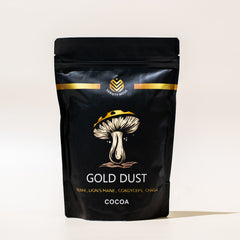
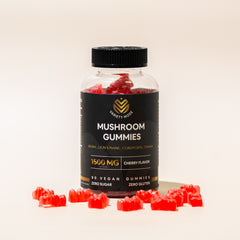
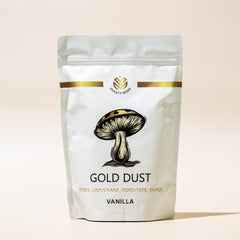
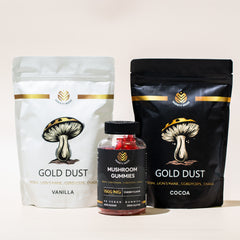
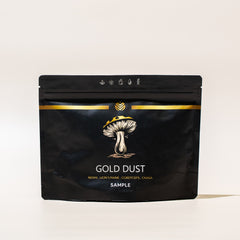

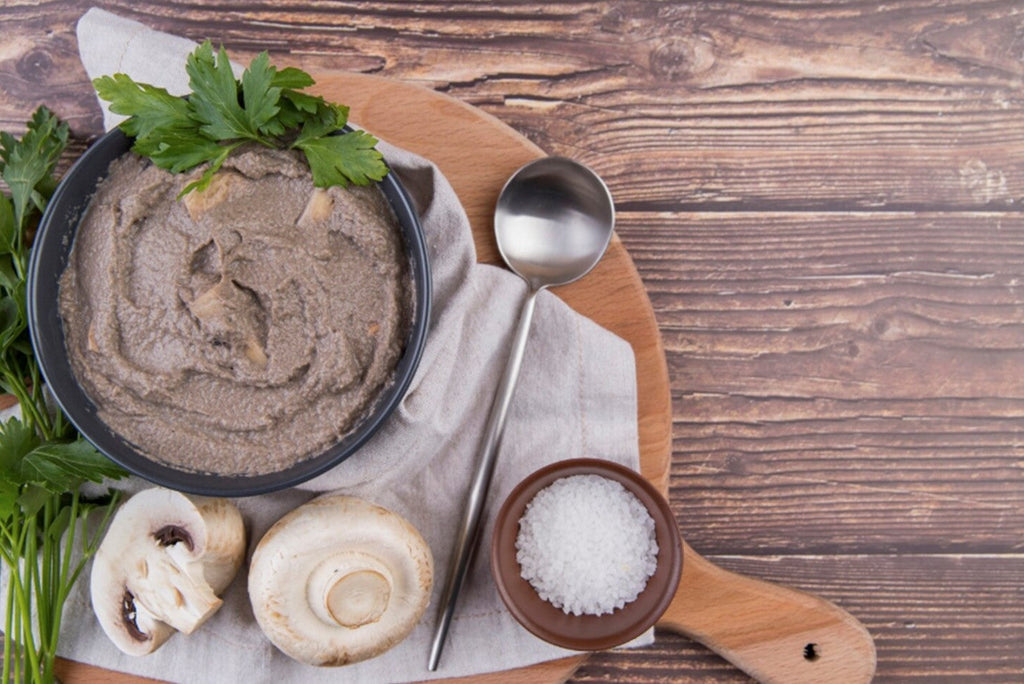
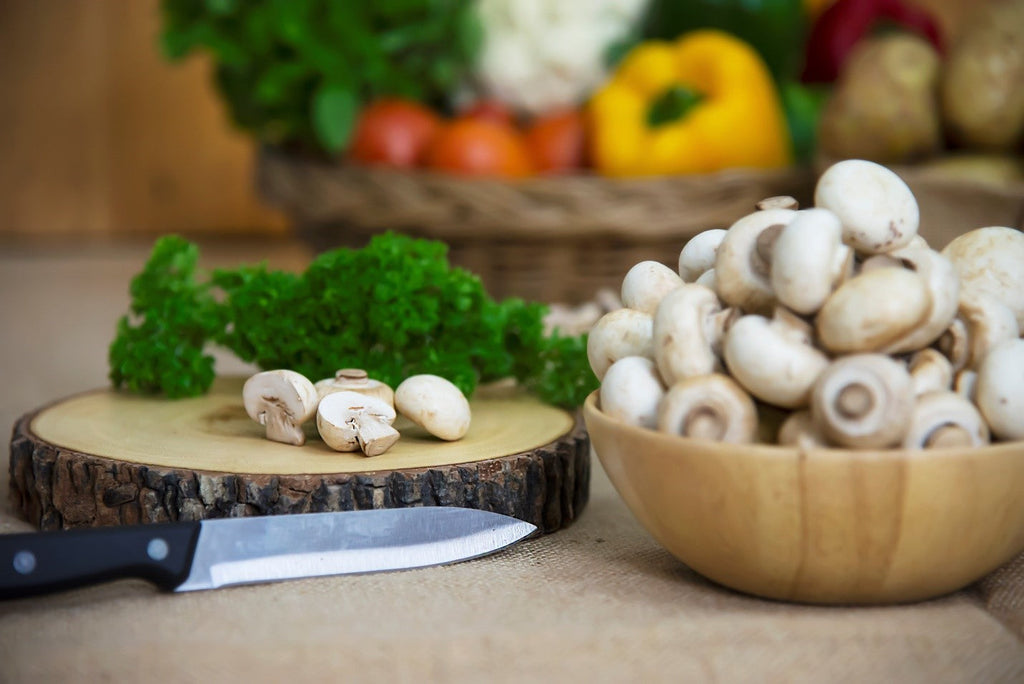

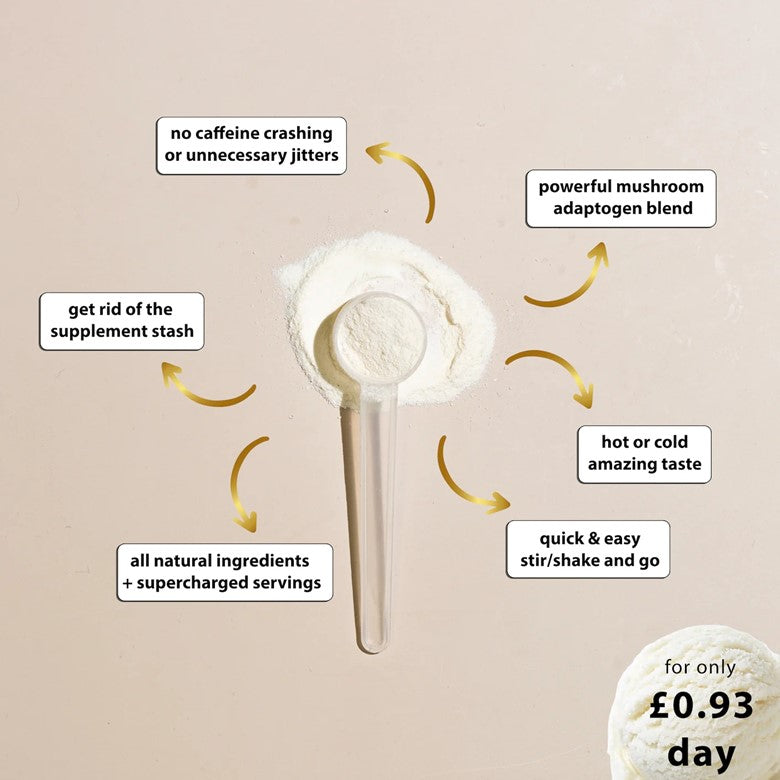
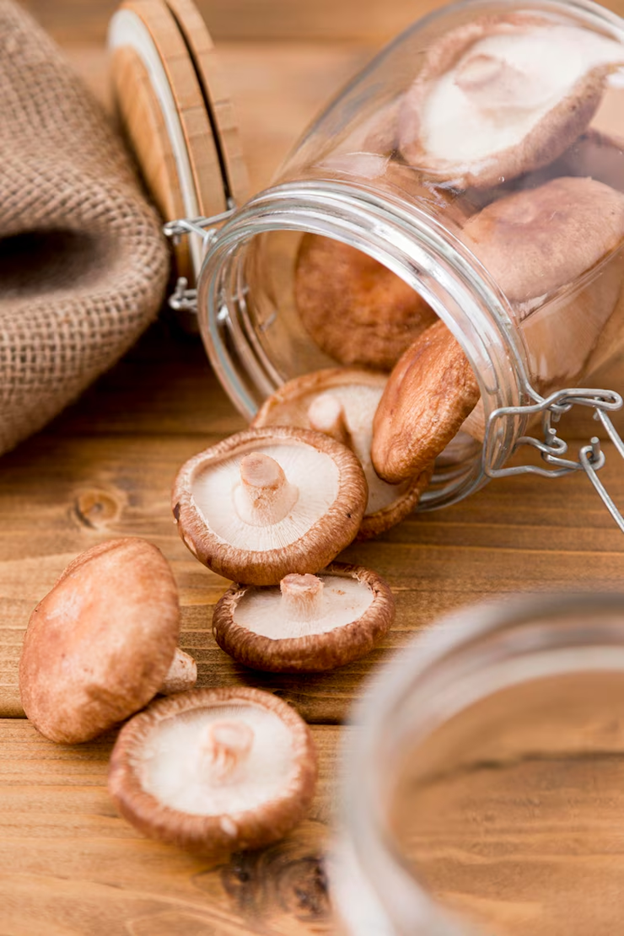
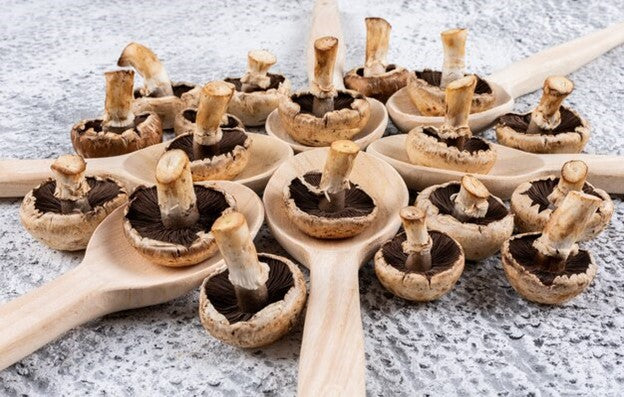


 Variety Mode LTD
Variety Mode LTD